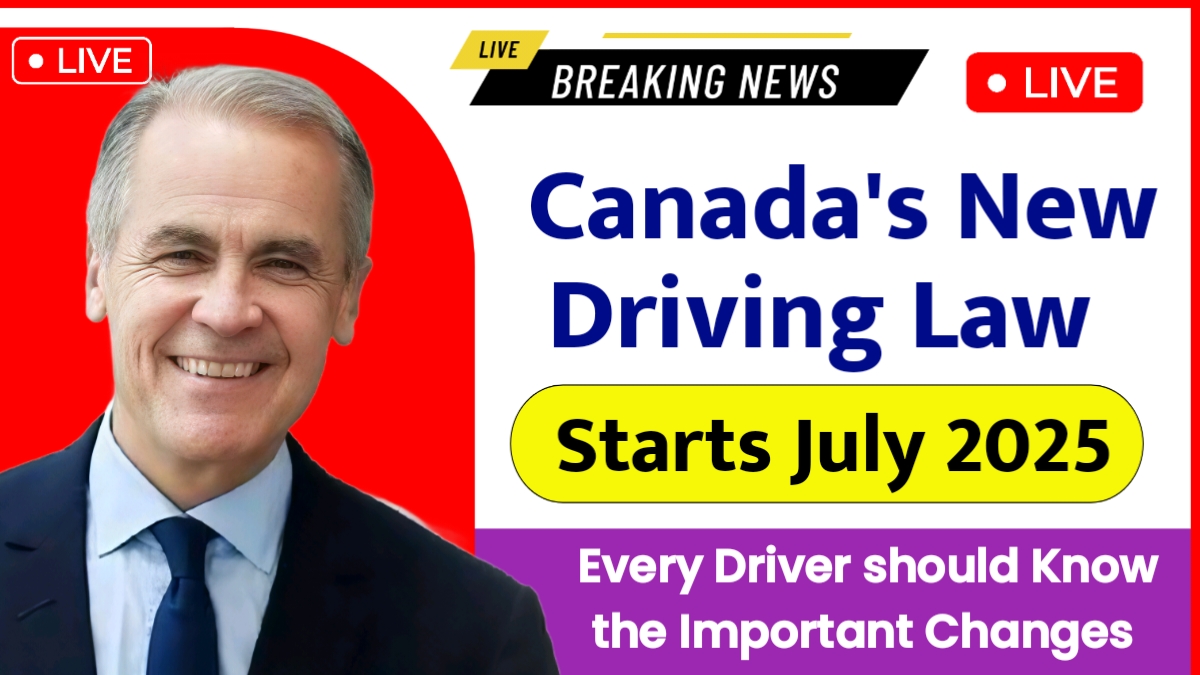Canada is preparing to tighten its road safety measures with the launch of the New Canada Driving Law 2025, taking effect on July 1. These major changes will impact how Canadians drive, enforce penalties, and equip vehicles with advanced safety features. Whether you’re behind the wheel daily or only occasionally, these updates could affect your license, wallet, and driving record.
Tougher Speed Rules
One of the most visible changes will be the enforcement of a national speed limit in school zones. Previously, provinces set their own rules, often limiting speed only during school hours. But starting July, a uniform 30 km/h limit will apply in all school zones across Canada, 24 hours a day. This shift is aimed at reducing child pedestrian accidents and improving neighborhood safety overall.
Higher Distracted Driving Fines
Distracted driving will now come with much steeper penalties. The base fine for a first offense rises from around $250 to a minimum of $600. For repeat offenses, license suspensions and even court appearances may be required. The new law also broadens the definition of distraction to include smartwatches, smart glasses, and other wearable tech—meaning simply checking a notification can land you in serious trouble.
National Alcohol Limit Lowered
The legal blood alcohol concentration (BAC) limit will decrease from 0.08 to 0.05, aligning Canada with several other countries that already enforce stricter impaired driving rules. This change applies across all provinces and territories and sends a clear message: even a small amount of alcohol could make you legally unfit to drive. Expect more roadside tests and zero-tolerance enforcement from law officers.
Mandatory Safety Tech
Every new car sold in Canada after July 2025 will need to include advanced driver-assistance systems (ADAS) such as lane-keeping assist, emergency braking, and adaptive cruise control. While these features were optional before, they will now be legally required. Older vehicles won’t need to comply immediately, but government incentives for retrofitting select features are expected to launch later this year.
Pedestrian Zones Standardized
Pedestrian-heavy areas in Canada will be federally managed and significantly expanded under the new law. These zones will receive more safety infrastructure and enforcement resources. Previously left to local municipalities, these high-risk zones will now follow consistent national rules—boosting protection in places like downtown cores, shopping districts, and transit hubs.
Commercial Driver Oversight
Commercial drivers will also see tighter oversight. New Hours of Service (HOS) laws will require electronic logging devices (ELDs) that include GPS tracking. These systems aim to crack down on driver fatigue and logging fraud. Violations can lead to stiff fines, license review, or retraining. This update is especially crucial for the freight and logistics sector, where long hours are common.
AI Speed Cameras Deployed
Canada will also deploy AI-powered speed cameras nationwide. These smart systems adapt to traffic flow, time of day, and accident history to better enforce speed limits. The goal is to reduce crashes in high-risk areas by monitoring behavior in real-time and issuing automated penalties to violators. More than just ticket machines, these tools are part of a larger tech push in road enforcement.
Get Ready Now
With the July 1, 2025 implementation date nearing, public awareness campaigns are set to launch in May to educate Canadians. Drivers are urged to review their vehicles, driving habits, and legal obligations. The government will provide updated materials on the official Motor Vehicle Safety Act website, and Service Canada portals will share eligibility details for retrofitting incentives.
Disclaimer: This article is for informational purposes only and does not constitute legal advice. Rules, enforcement measures, and eligibility criteria may change. For the most accurate and current information, visit official Canadian government websites or consult a qualified legal or traffic safety expert.



